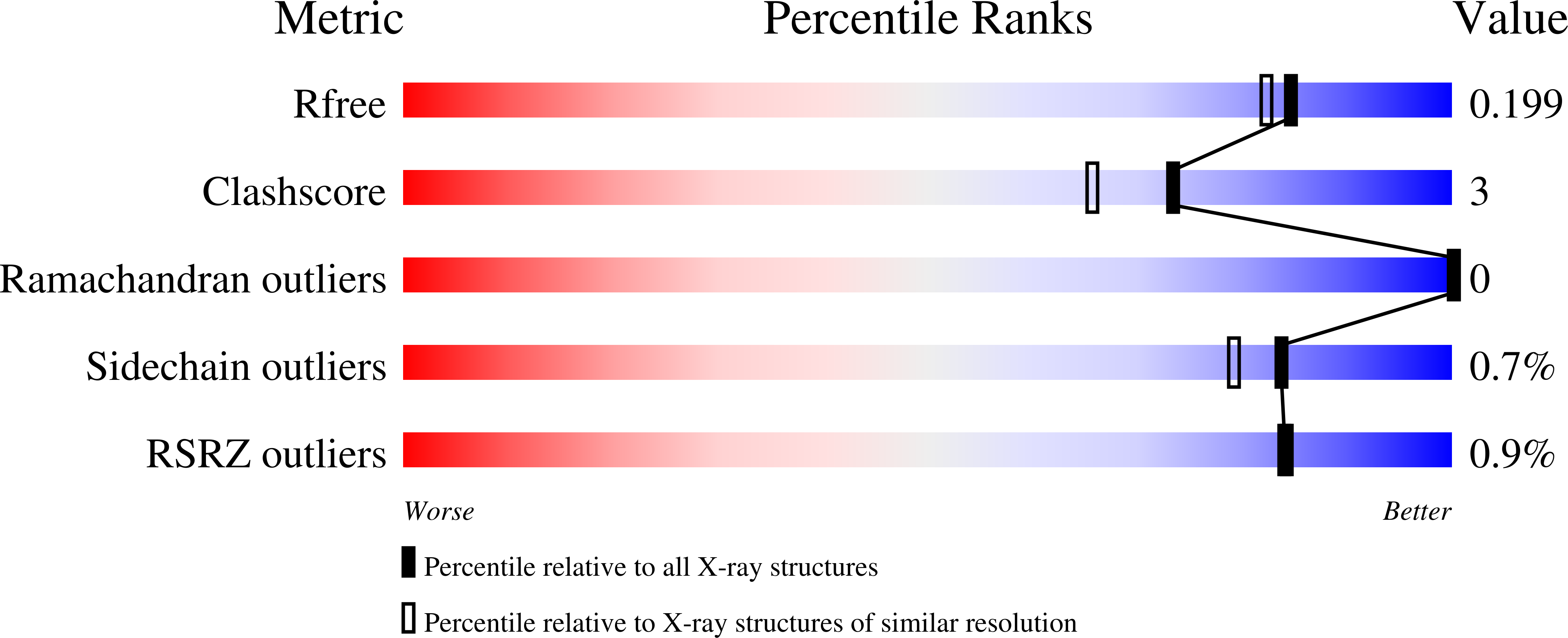Sugar-binding sites of the HA1 subcomponent of Clostridium botulinum type C progenitor toxin
Nakamura, T., Tonozuka, T., Ide, A., Yuzawa, T., Oguma, K., Nishikawa, A.(2008) J Mol Biol 376: 854-867
- PubMed: 18178224
- DOI: https://doi.org/10.1016/j.jmb.2007.12.031
- Primary Citation of Related Structures:
3AH1, 3AH2, 3AH4 - PubMed Abstract:
Clostridium botulinum type C 16S progenitor toxin contains a hemagglutinin (HA) subcomponent, designated HA1, which appears to play an important role in the effective internalization of the toxin in gastrointestinal epithelial cells and in creating a broad specificity for the oligosaccharide structure that corresponds to various targets. In this study, using the recombinant protein fused to glutathione S-transferase, we investigated the binding specificity of the HA1 subcomponent to sugars and estimated the binding sites of HA1 based on X-ray crystallography and soaking experiments using various sugars. N-Acetylneuraminic acid, N-acetylgalactosamine, and galactose effectively inhibited the binding that occurs between glutathione S-transferase-HA1 and mucins, whereas N-acetylglucosamine and glucose did not inhibit it. The crystal structures of HA1 complex with N-acetylneuraminic acid, N-acetylgalactosamine, and galactose were also determined. There are two sugar-binding sites, sites I and II. Site I corresponds to the electron densities noted for all sugars and is located at the C-terminal beta-trefoil domain, while site II corresponds to the electron densities noted only for galactose. An aromatic amino acid residue, Trp176, at site I has a stacking interaction with the hexose ring of the sugars. On the other hand, there is no aromatic residue at site II; thus, the interaction with galactose seems to be poor. The double mutant W176A at site I and D271F at site II has no avidity for N-acetylneuraminic acid but has avidity for galactose. In this report, the binding specificity of botulinum C16S toxin HA1 to various sugars is demonstrated based on its structural features.
Organizational Affiliation:
Department of Applied Biological Science, Tokyo University of Agriculture and Technology, 3-5-8 Saiwai-cho, Fuchu-shi, Tokyo 183-8509, Japan.















